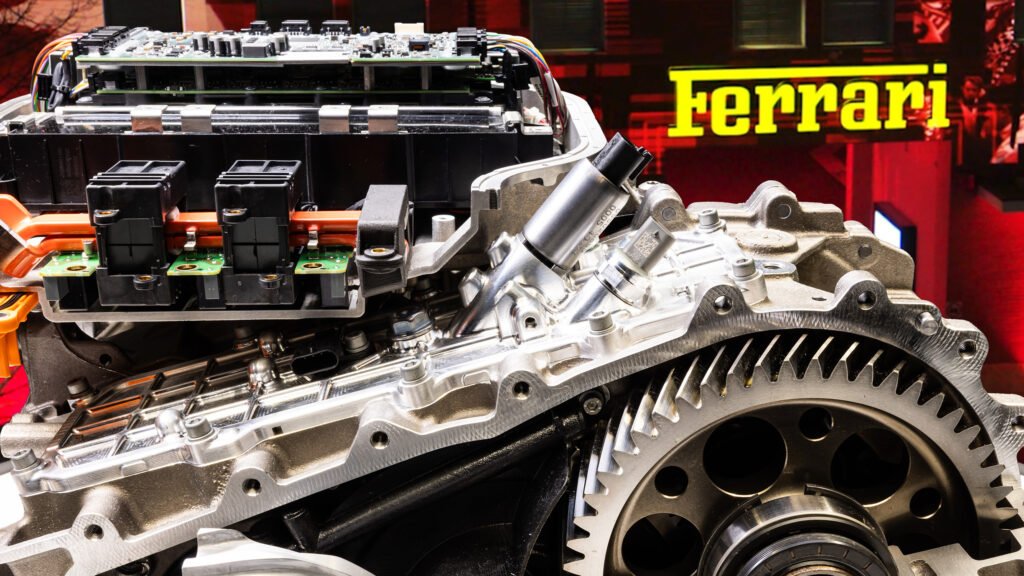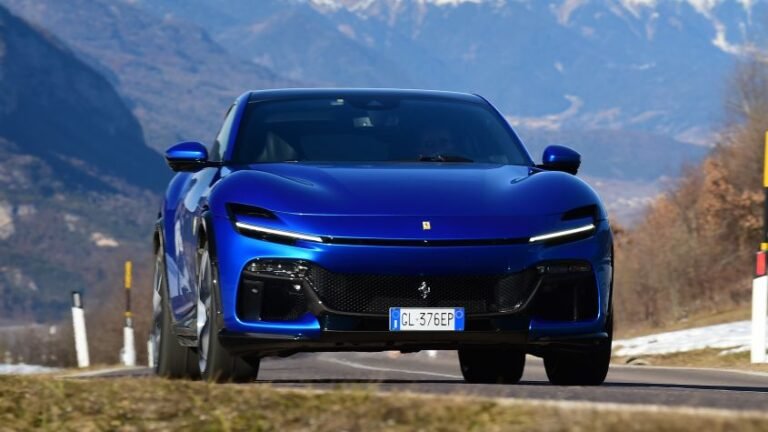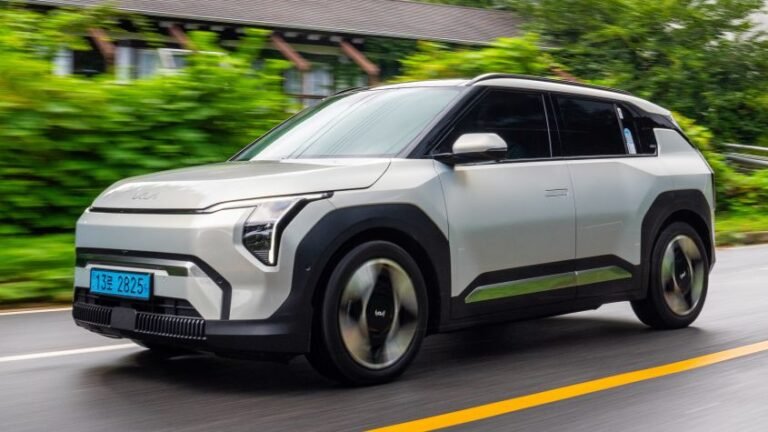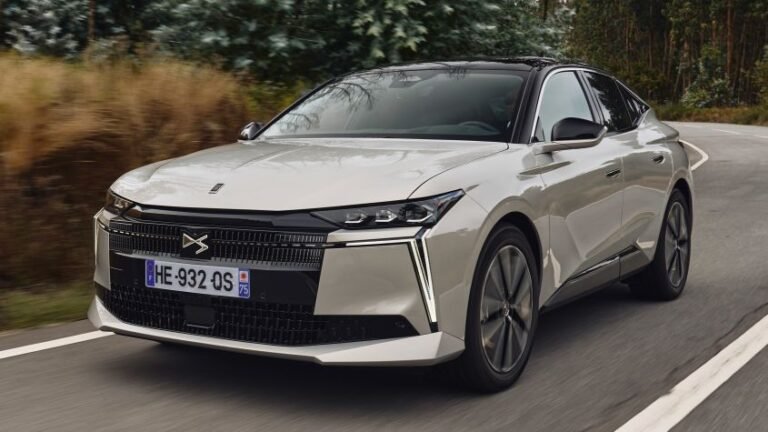

- Ferrari has revealed its first EV will have a quad-motor setup making over 986 hp/1,000 PS.
- The product development boss said he wasn’t interested in winning an EV horsepower war.
- Gianmaria Fulgenzi described EVs like China’s 1,526 hp Xiaomi SU7 Ultra as “elephants.”
Ferrari has dropped the first details about its maiden EV, next year’s Elettrica crossover, and some people might be wondering if, by doing so, it’s dropped the ball as well. Because while its peak output will be over 986 hp (1,000 PS / 735 kW), Ferrari has confirmed it will not make as much power as the new breed of rapid Chinese electric cars.
“You can see on the market some electric cars that already have 2,000 horsepower,” Ferrari product boss Gianmaria Fulgenzi told media.
Related: Ferrari’s EV Mystery Prototype Teases Breadvan But It’s An Illusion
“It’s very easy and simple to create that power with an electric engine. So you can see in the market a lot of companies that have never done cars, and now they’re able to produce a car with 1,000 horsepower.”
Fulgenzi didn’t mention smartphone firm turned automaker Xiaomi by name, or its 1,526 hp (1,547 PS / 1,138 kW) Xiaomi SU7 Ultra. But it’s the car that most obviously springs to mind, and we know that Ferrari recently had its hands on an SU7 at its Maranello HQ.
He could also have been thinking of the BYD’s 2,977 (3,018 PS / 2,220 kW) YangWang U9 Xtreme, which this month recorded 308 mph (491 km/h) at VW’s Ehra-Lessien test track, beating the Bugatti Chiron Super Sport 300+’s record.
Super-Power EVs Are “Elephants”

“But what is the joke? What do you feel when you drive this kind of car?” he asked journalists, per Auto Express. “They are elephants because you need very big engines and a very big battery.”
Let’s leave aside the elephant in Fulgenzi’s room – the Elettrica’s huge 122 kWh battery dwarfs the ones in the SU7 and U9 – and look at the other figures.
A combination of a 282 hp (210 kW / 286 PS) front axle from the F80 supercar and 831 hp (620 kW / 843 PS) from the rear motors will give “more than” 986 hp, Ferrari says, enough for a 2.5-second zero to 62 mph (100 km/h) time and electronically limited 193 mph (310 km/h) top speed. Those are still impressive numbers in absolute terms, but won’t set the Elettrica apart from the crowd.
It’s kind of funny to hear a company like Ferrari, which for years pushed power outputs, acceleration and top speeds to new highs, talking about how pointless the fastest modern cars are. But Fulgenzi is right: we (and automakers) seem to have crossed a line here in terms of power and performance and don’t know how to stop.
Why? Because horsepower, top speed, and 0-60 times are the metrics by which we’ve judged performance cars for decades. Remove them and we’re kind of lost, unless we actually get a chance to jump behind the wheel and experience them ourselves.
It’d be difficult to explain to a potential customer why they should buy your car if it made less power and was slower than the one they already have (though Detroit had to do that during the emissions-strangled 1970s), so automakers keep pushing. And for years, that was fine.
When you traded in your naturally aspirated E46 330i that required 6.5 seconds to get to 60 mph for a turbocharged E90/92 335i that did the job in 5.5 seconds, you could feel the difference, and that could be fun.
How Much Is Enough?

But when even fairly ordinary electric cars like the $54,990 Tesla Model 3 Performance can get to 60 in 2.9 seconds, you have to wonder how much longer automakers can keep pushing in this direction. Beyond bragging rights, there’s little extra benefit in having a car that accelerates more quickly than that.
And definitely none to insurance companies, because an uptick in accident rates is surely inevitable if we keep going. Rarely mentioned today is that crippling insurance premiums had as much to do with the death of the original American muscle car in the early 1970s as tightening emissions regulations.
Related: Ferrari’s New Playground Might End Maranello’s Favorite Spectator Sport
Anyone who lifts weights for recreation might recognise a parallel in all of this to men’s bodybuilding. From the mid 1990s, partly off the back of the use of new drugs like insulin and growth hormone, the guys competing in the top tier literally exploded in size, shifting the focus from aesthetics to freak-show levels of mass.
It was, and still is, fascinating to see what the body can achieve when pushed to the limit, in the same way that it’s impressive that a BYD can do 308 mph. But more recently we’ve seen a huge boom in the popularity of the Classic Physique division, whose shapes hark back to the “golden era” of bodybuilding, when men like Arnold Schwarzenegger still looked super, but also human.
Stepping Back From The Speed Wars
Andrea Canuri for SHProshots
Is Ferrari (of all people) leading a similar shift in the car world with its Elettrica (seen above, testing)? If it is, it wouldn’t be the first time it’s turned its back on the battle to have the biggest numbers.
Although the F40’s 202 mph (325 kmh) top speed broke new ground, for the past 25 years Ferrari has capped its fastest cars at 217 mph (350 kmh) and was content to let Bugatti build cars that ate up a drag strip in less time. That decision in no way diminished Ferrari’s credibility in the eyes of enthusiasts.
But letting other brands make everyday crossovers that are more powerful, accelerate more quickly, and cost less, while also still not publishing any other metrics like a Nurburgring lap time to show us how the sum of the car, including its chassis and brakes, is more important than the schoolyard stats? Now that’s a bold move.
And it’s one that’ll really test Ferrari’s brand strength, particularly among younger buyers who are less familiar with Maranello’s history – one built in large part on cars that were the fastest and most powerful of their time.
Can you see an end to the performance wars? Do you think legislators might eventually step in to curtail the madness? What is the sweet spot for power and acceleration anyway? And is Ferrari right to take its foot off the gas? Throw a comment down below and let us know your thoughts.
Ferrari hasn’t released any exterior images of the Elettrica yet, but it has given us a peek under the skin at the battery and motors, which you can see in the gallery below.
Ferrari


